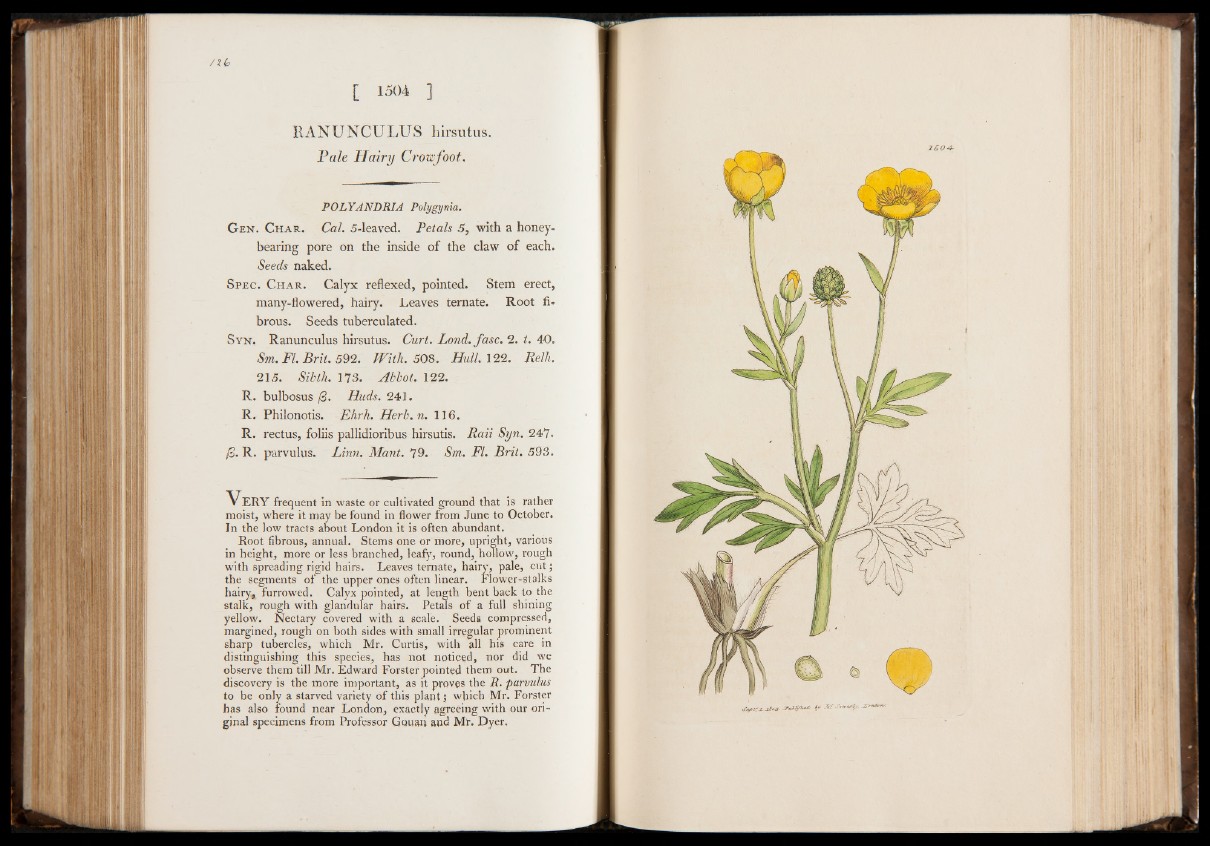
/■ ?£>
[ 1504 ]
RANUNCULUS liirsutus.
Pale Hairy Crowfoot.
POLYANDRIA Polygyria.
Gen. Char. Cal. 5-leaved. Petals 5, with a honeybearing
pore on the inside of the claw of each.
Seeds naked.
S p e c . C h a r . Calyx reflexed, pointed. Stem erect,
many-flowered, hairy. Leaves ternate. Root fibrous.
Seeds tuberculated.
Syn. Ranunculus hirsutus. Curt. Lond. fasc. 2. t. 40.
Sm. FI. Bril. 592. With. 5 0 8 . Hull. 122. Relh.
215. Sibth. 173. Abbot. 122.
R. bulbosus fB. Huds. 241.
R. Philonotis. JLhrh. Herb.n. 116.
R. rectus, foliis pallidioribus hirsutis. Rail Syn. 247.
f3. R. parvulus. Linn. Mant. 79. Sm. FI. Brit. 5 9 3 .
V E R Y frequent in waste or cultivated ground that is rather
moist, where it may be found in flower from June to October.
In the low tracts about London it is often abundant.
Root fibrous, annual. Stems one or more, upright, various
in height, more or less branched, leafy, round, hollow, rough
with spreading rigid hairs. Leaves ternate, hair)', pale, cut;
the segments of the upper ones often linear. Flower-stalks
hairy, furrowed. Calyx pointed, at length bent back to the
stalk, rough with glandular hairs. Petals of a full shining
yellow. Nectary covered with a scale. Seeds compressed,
margined, rough on both sides with small irregular prominent
sharp tubercles, which Mr. Curtis, with all his care in
distinguishing this species, has not noticed, nor did we
observe them till Mr. Edward Forster pointed them out. The
discovery is the more important, as it proves the R. parvulus
to be only a starved variety of this plant) which Mr. Forster
has also found near London, exactly agreeing with our original
specimens from Professor Gouan and Mr. Dyer.